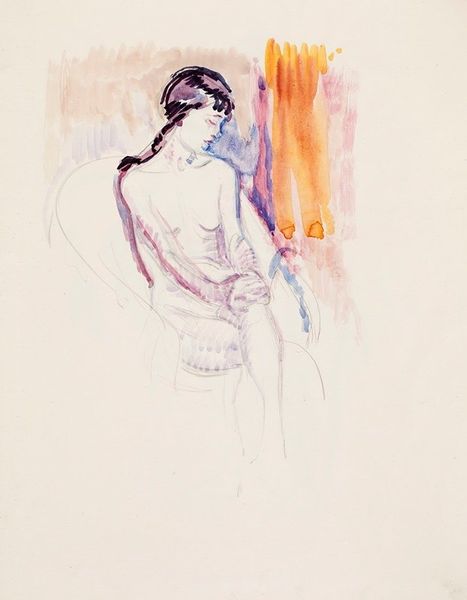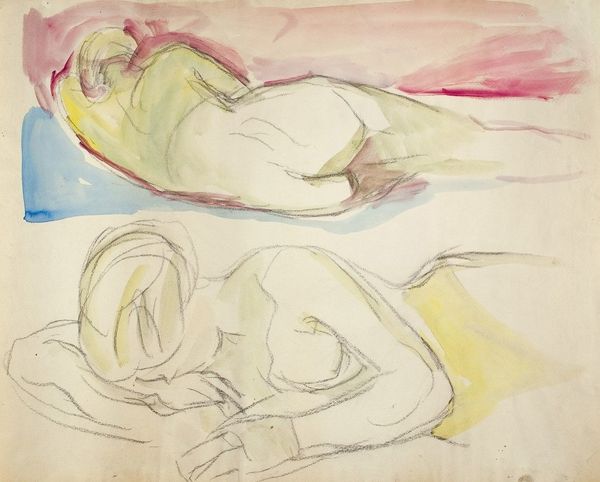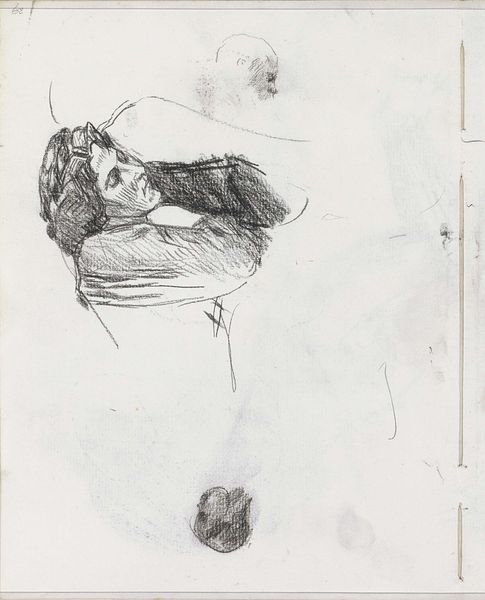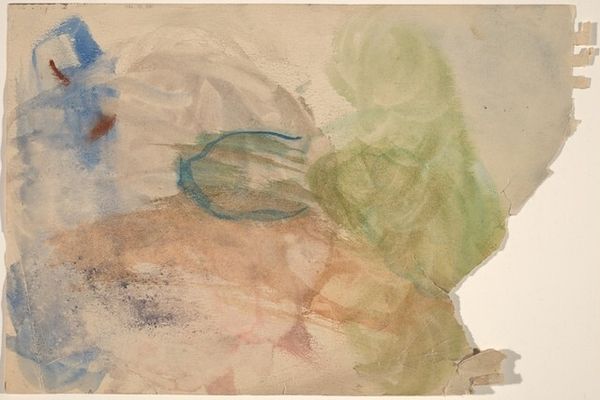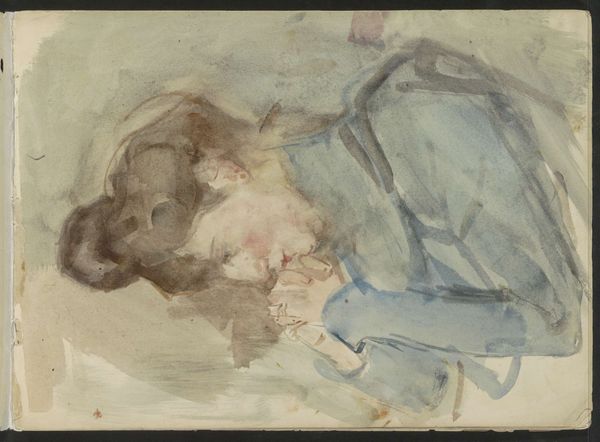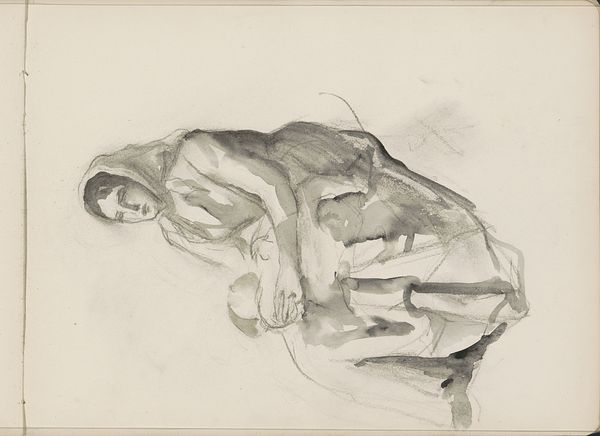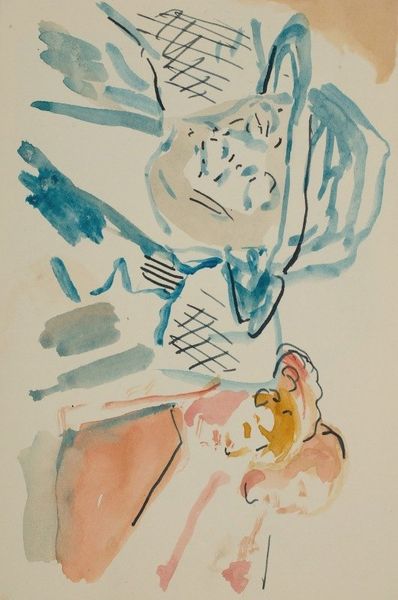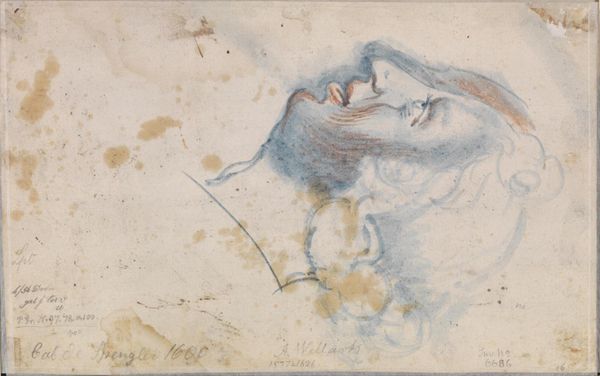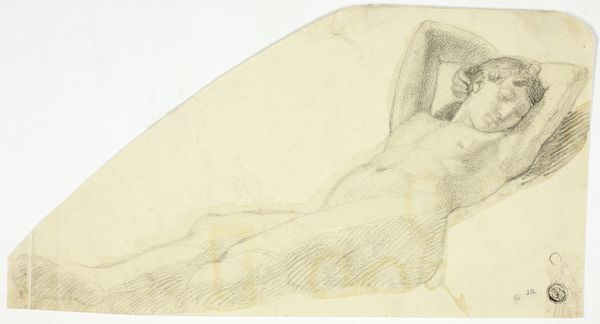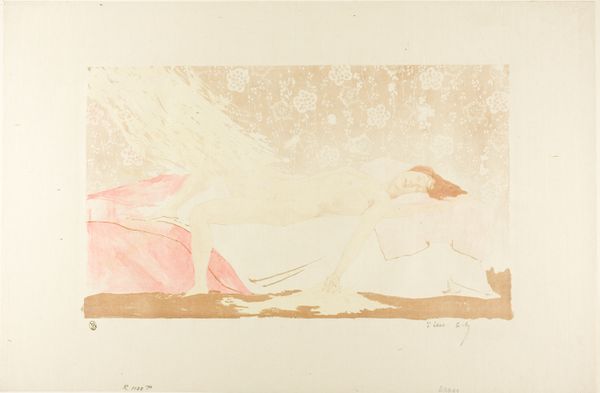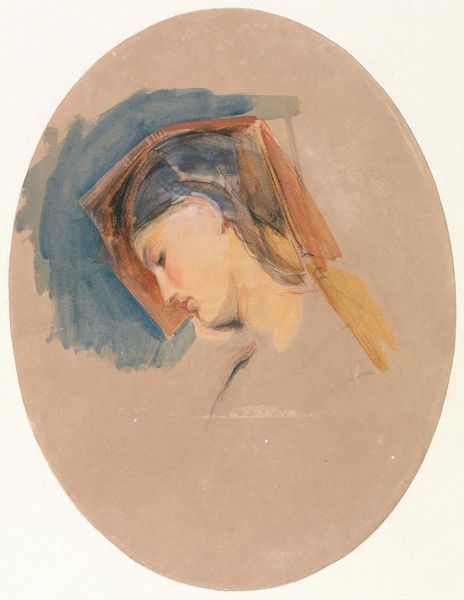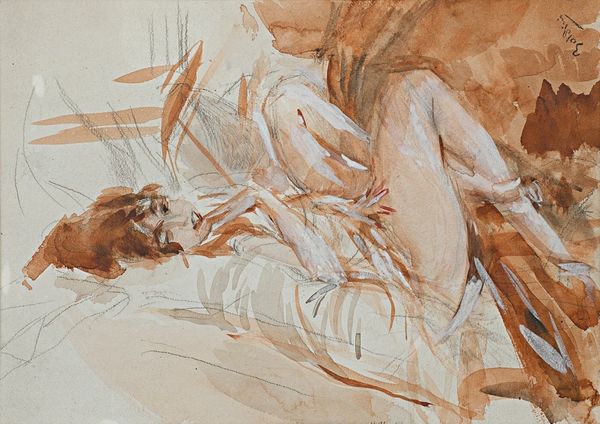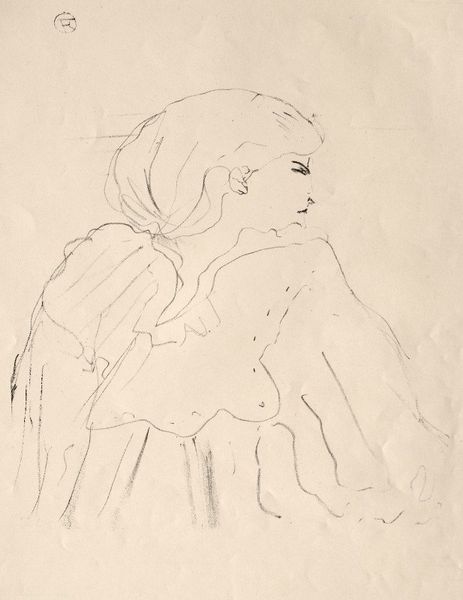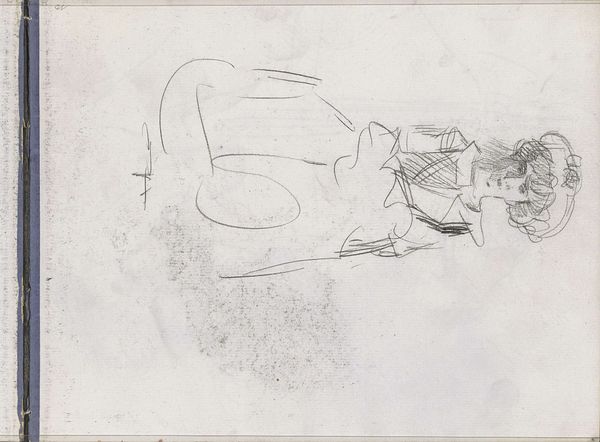
#
possibly oil pastel
#
abstract
#
oil painting
#
fluid art
#
acrylic on canvas
#
underpainting
#
painting painterly
#
animal drawing portrait
#
portrait drawing
#
watercolour illustration
#
watercolor
Copyright: Public Domain: Artvee
Curator: Look at this interesting work by Edvard Munch, titled "Liggende akt," created sometime between 1919 and 1924. Editor: It’s strikingly vulnerable. The colors are so muted and watery, the form barely contained, and it all feels very intimate and immediate. Is it watercolor? Curator: It is a watercolor. Notice the context of its creation. Post-World War I, Munch was grappling with illness and artistic re-evaluation, a period marked by works with this kind of intimacy. It breaks away from the intensity of his earlier symbolist works. Editor: That explains the visual shift I felt. While it still has that slightly haunted, searching quality characteristic of his famous paintings like "The Scream", this reclining nude introduces vulnerability through its artistic style, a different form of honesty perhaps. I'm particularly drawn to the shadows cast – almost bruise-like blues and purples. What do these shadows tell us, I wonder, beyond a simple record of light? Curator: It’s precisely that juxtaposition – of fragility and shadow – that offers a compelling narrative. The relaxed, or perhaps resigned pose and the dark strokes framing her presence, create a dialogue around feminine vulnerability during that era and its depiction in the fine arts, particularly painting and watercolor, then consumed largely by middle class. There is a lack of polish. Is it by accident, or by design? I'd even wager the lack of background calls to a feeling of uncertainty. Editor: It's like the symbol of her physical form is almost fading into the unknown, as if this artistic study of the female form goes beyond flesh and bones, it’s about an emotional experience with time. This work reminds me of certain pre-Raphaelite treatments of similar subjects with much lighter color palettes. Do you think there are certain connections to be explored with artistic predecessors or contemporaneous depictions of nude figures and the rise of the artistic freedom around gender dynamics? Curator: Absolutely, and further exploring the context of changing social expectations and roles around gender after the War would be insightful for this work. Editor: I think what strikes me most is how this painting feels like a study in contrasts, blending vulnerability with an eerie depth, making it resonate far beyond its simple execution. Curator: A nuanced exploration that exemplifies Munch's ability to depict profound emotion through simple media.
Comments
No comments
Be the first to comment and join the conversation on the ultimate creative platform.
